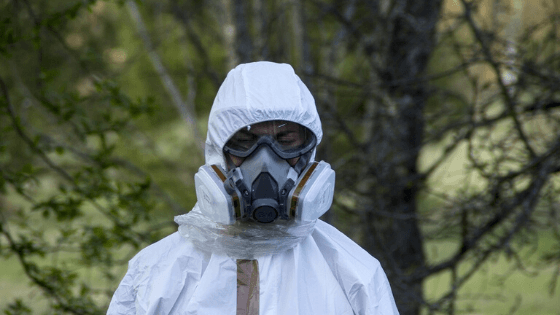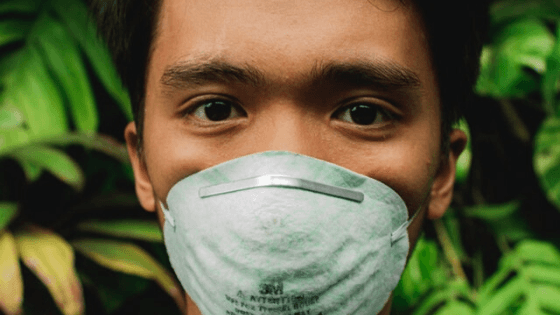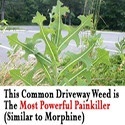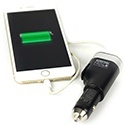With so many, unfortunate events happened around the globe recently, it is so sad that there are still people who are not familiar with a respirator mask.
What people know or use often is the surgical mask which is intended to be worn by health professionals during surgery.
But during a disaster or outbreak, it should be a respirator mask.
A respirator mask is a special type of apparatus designed to prevent the wearer from inhaling any type of contaminant or hazardous substances present in the air.
It is potentially lifesaving, won’t cost a lot of money, but is often overlooked.
The importance of something that can help you breathe without sucking harmful particles or vapors into your lungs cannot be overstated. After all, in any survival event, air comes first, always, then water, then food.
So we made this article to help identify and classify different kinds of masks and when to use each.
Respirator’s Masks Classifications
When purchasing respirator masks, the major question is what kind to get.
There are many different classifications, but here, we will just discuss the 3 most common and popular types:
N, R, and P series masks
These letters are classes that indicate the resistance of the mask to oil and are assigned and approved by The National Institute for Occupational Safety and Health (NIOSH).
N – no resistance to oil
R – somewhat resistance to oil
P – strongly resistant to oil
Then there are numbers, generally between 95 and 100. The number indicates the percentage of potential leakage.
95 – filters out 95% of airborne particles
99 – filters out 99% of airborne particles
100 – filters out 99.97% of airborne particles
The type of filter you’ll need will depend on the type of threat you are facing. We recommend to not spend money on anything less than 100 series filters unless it is for something very minor, like working with various dust. They will filter out the smallest of particulates and because you’ll never know what type of threat you’ll be facing, the best idea is to filter out as much as possible.
If you can only get one kind, get the P100 type because this will be resistant to just about any threat. This type comes in a reusable and disposable version. If you get the reusable type, be sure to stock up on replacement filters.
When would you need a Respirator Mask?
Here are the lists of different situations that count as viable reasons to wear a respirator:
If you live in a wildfire country, your emergency basic kit should contain swim goggles and N100 masks for everyone in the family. In the event of a fire, the goggles will protect your eyes from the smoke, and the respirator mask will help you breathe despite the ash and smoke. These would also be helpful during a house fire.
- Nuclear Strike or War
If a war between countries occurs, then surely a nuclear strike will be fired. Though it may not automatically be a death sentence if you are outside the initial blast zone, exposing yourself to the radioactive aftermath can be the cause of your demise. Wearing gear like a P100 mask, goggles, and a Tyvek suit will provide some protection for you from radiation.
- Disease Outbreaks
If an airborne contagious illness is spreading, you can use N100 or P100 mask to prevent inhaling the virus. But it all depends on the size of the virus (this information will generally be available from the CDC. Ebola, for example, is .02 microns, so the protection of a 100 series mask is essential.
- During Search and Rescue Operations
When a building collapse, many dangerous particles will be floating through the air. Like what happened during the 9/11 attack. The first responders and people working at the WTC on 9/11 ended up with multiple myeloma, a cancer of the blood. Thousands of people have fought off cancer, only to have it recur repeatedly and a new study says also cardiovascular disease is also a high risk. (source)
During the search and rescue for any type of structural collapse, for example, an earthquake, an N-series mask will work in this situation to protect the lungs from the toxic debris floating through the air.
- When performing work that involves dust
If you are doing any type of work in which dust particles are prevalent, you can either go for the disposable type for a single-use or reusable mask that goes with replaceable filters.
For example, sawdust, an inexpensive N95 mask will suffice. If you’re cleaning up an area in which rats have been present, you’ll need to be concerned about hantavirus, and an N100 is in order. Particles from welding can be very small, also necessitating an N100 mask. A bigger number means greater efficiency.
- Spray Painting
When doing some spray painting work or using strong chemical solvents, you can protect your lungs with a P100 mask.
- During an Urban Unrest
When seeing a large angry crowd, better stay away from them. Moreover, if some reason you’re in the midst of one, the opposition will use tear gas to disperse the crowd. Only a P-series mask will help in this situation.
- During and After Volcanic Eruption
One of the biggest risks if you survive the eruption is breathing in volcanic ash. An N95 mask will protect your lungs.
- Mold Removal
Mold exposure can lead to a variety of allergic reactions and individuals currently suffering from asthma and certain respiratory diseases will experience worse effects. In order to reduce potential health risks, the N100 mask will protect you from the spores.
What are some good respirator masks we can recommend?
If you are going to add respirator masks to your basic emergency kit, it is better to practice putting them on. When you need them, seconds may count and there won’t be time to be bumbling around.
Below, you can find links to some of the respirator masks that we recommend:
- Reusable P100 Mask and replacement filters
- N100 mask
- N95 mask
- Child-sized N-95 mask
In most situations when you’ll need a mask, safety goggles will also be necessary. Get the kind with an elastic band around the back and rubber around your eyes to ensure a good, snug fit.
Do you have protective respirator masks on hand already?
If so, what type do you use and keep? Why?












